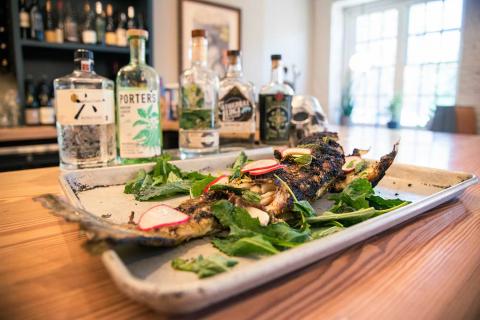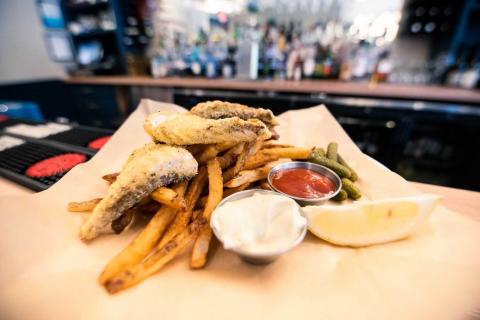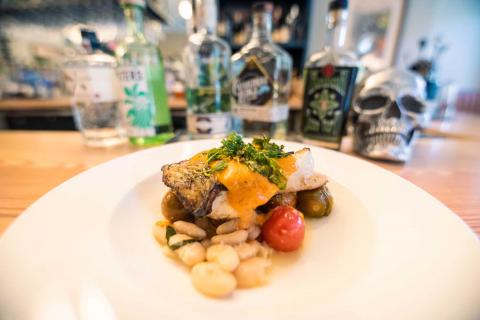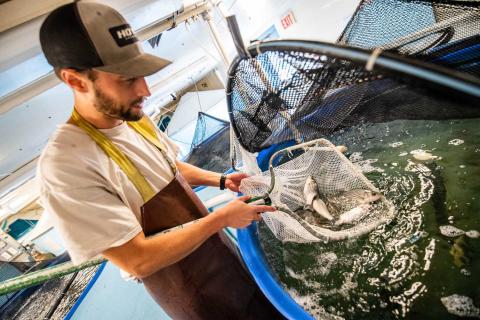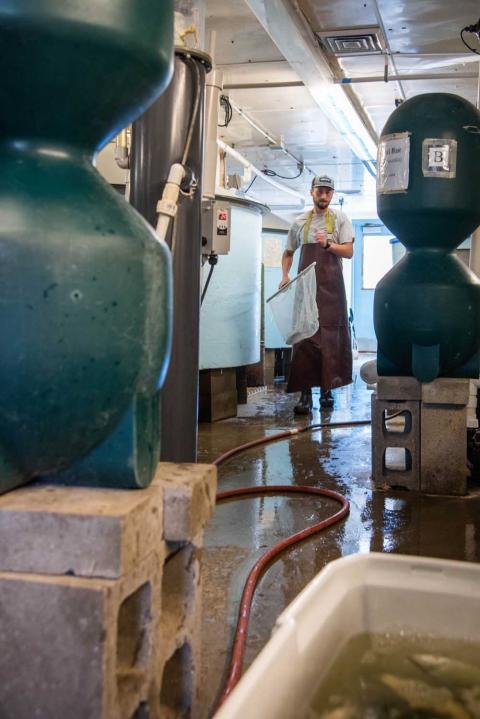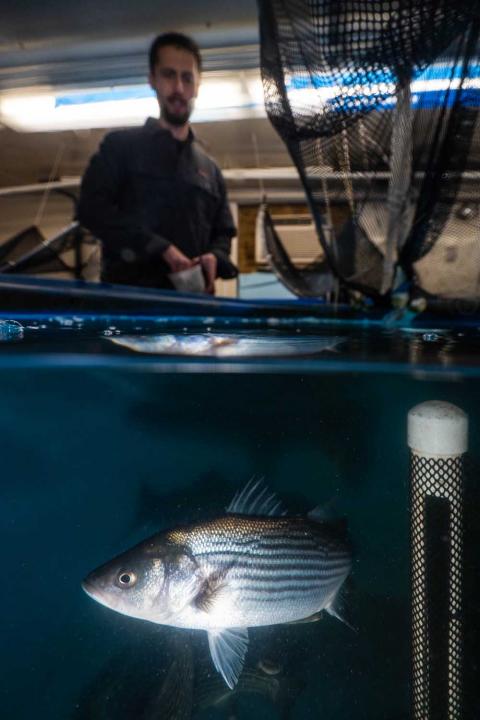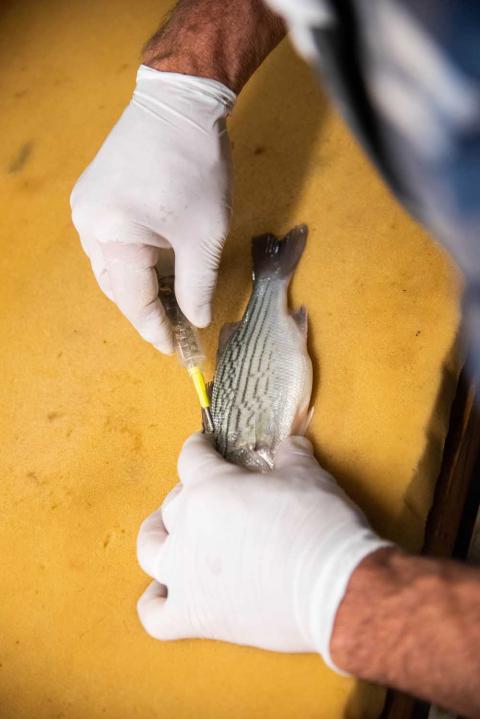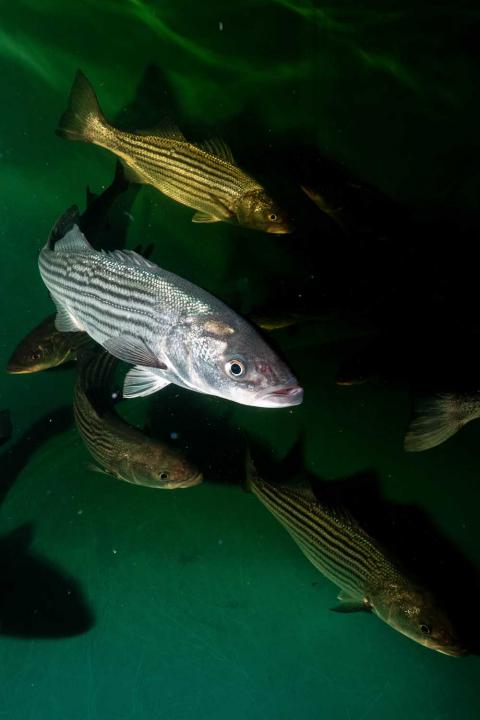NH-Grown Striped Bass Aquaculture
Anglers, home chefs, and seafood lovers in New England know the Striped Bass well. Sought after for its exciting fight on the line and its white flaky flesh on the grill or plate, stripers can be hard to get a hold of in New Hampshire: there's no commercial harvest. Researchers from UNH – David Berlinsky, Linas Kenter, and Adrienne Kovach – are developing a new way for Granite Staters to get striped bass: aquaculture.
Grown in tanks on UNH campus in saltwater, the stripers grow quickly and taste great. The tanks are designed to simulate conditions in potential locations for offshore netpens where striped bass could be grown, and the stripers grow well in many different conditions, sometimes better than other fish like salmon or steelhead trout that need specific temperatures. Striped bass have evolved in extremely varied conditions; they migrate from salt to freshwater to spawn and move up and down the East coast, so they're able to tolerate and thrive in many types of environments.
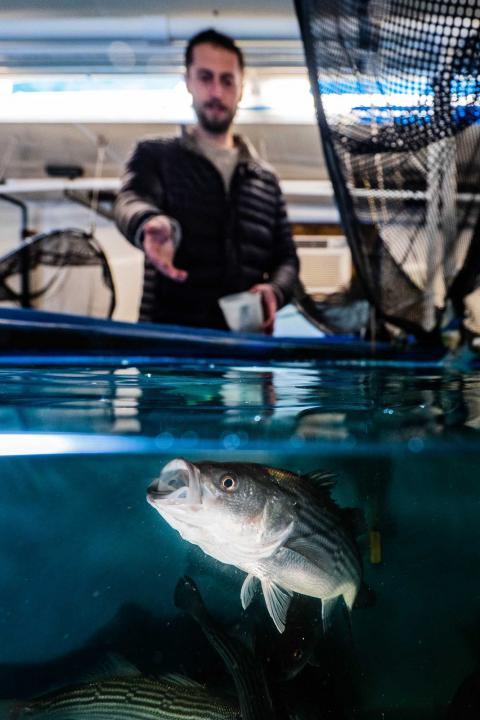
They also have distinct spawning groups, meaning that different genetic lines of striped bass may be better than others for aquaculture, which Kenter and the other researcher are testing. By comparing different strains the team can help future aquaculture operations optimize their fish to their growing conditions, helping a fledgling industry grow.
Even though temperatures got into the low teens Celsius during the winter, striped bass were still feeding perfectly fine. Knowing that there's a species that can feed and grow year round in that range of temperatures and salinities is very promising for an industry.
— Linas Kenter, UNH
Kenter also partnered with local chefs including Brendan Vesey of Botanica Restaurant and Gin Bar in Portsmouth to workshop recipes, get feedback on the culinary quality of the fish, and develop local appreciation and demand for striped bass.
This fish can be grilled, it can be breaded and pan-fried, it can be crispy-skin cooked like a salmon, it can be roasted. I like that versatility in a fish to get multiple preparations.
— Brendan Vesey, Botanica Restaurant and Gin Bar
Striped bass aquaculture provides a unique opportunity for chefs who otherwise can't cook with the fish. There's a limited commercial harvest in Massachusetts, but the market price is high and supply is small, so that oftentimes the stripers never make it out of high-end restaurants in Boston. Researchers have estimated that U.S. farm gate value for striped bass could range between $4.60 and $6.00 per pound at market.
Compared to existing aquacultured striped bass, which are hybrids grown in freshwater, these fish are bigger and more flavorful, with that wild striper meat and flavor that anglers and home chefs know and love, reaching an optimal target of three pounds in just two years of growth.
We're answering this challenging seafood question in what I feel is a sustainable fashion with also recognizable product. We're not trying to sell a farm-raised fish that has nothing to do with our local foodshed.
— Brendan Vesey, Botanica Restaurant and Gin Bar
